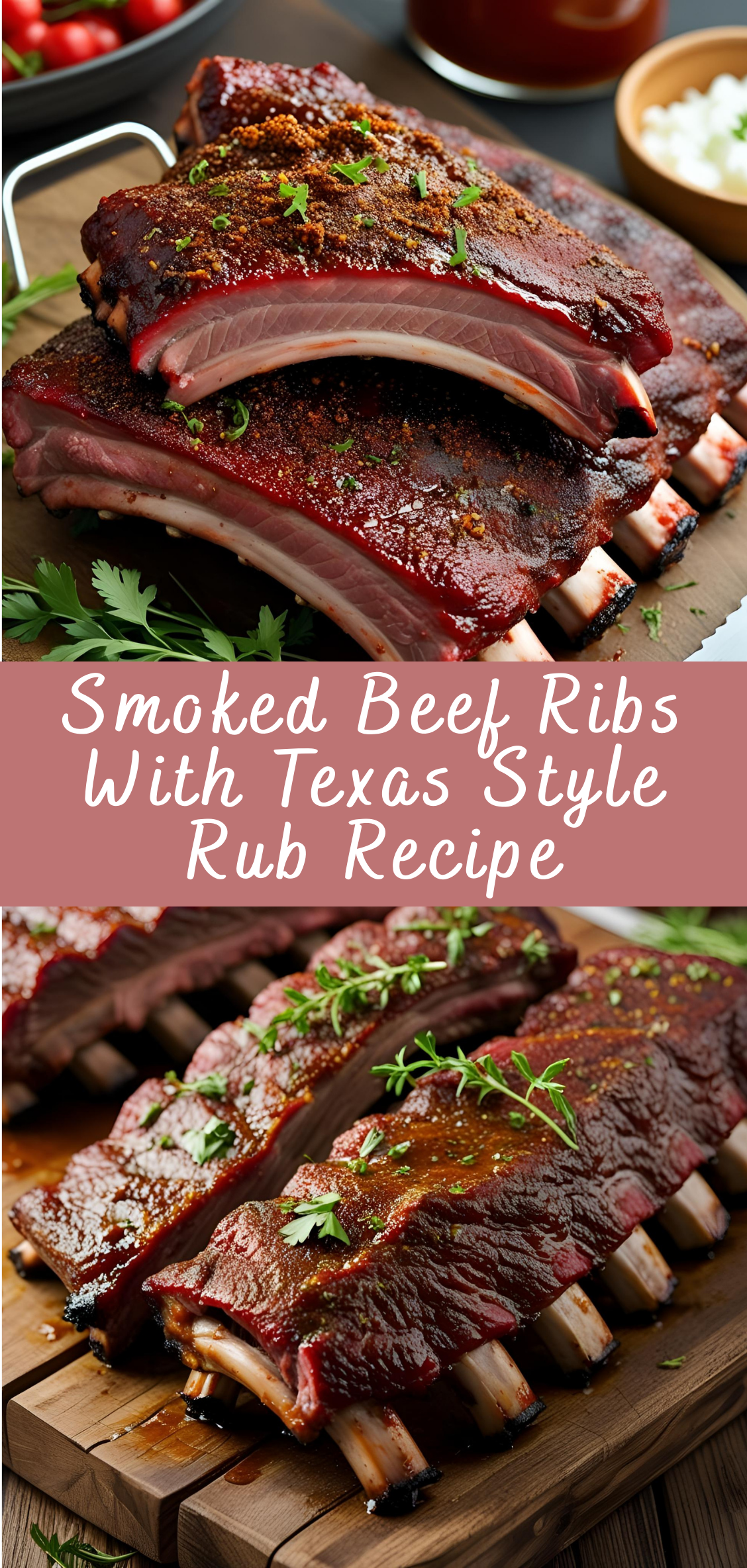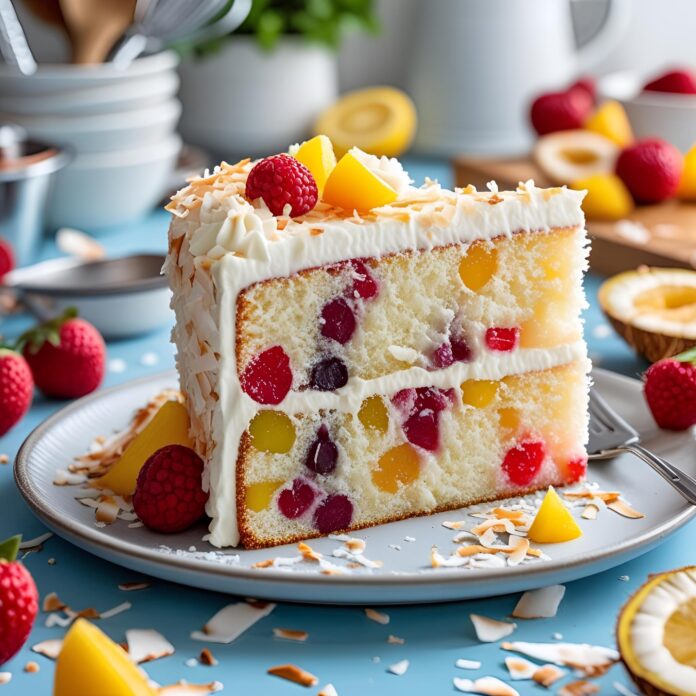Smoked Beef Ribs With Texas Style Rub Recipe
When it comes to barbecue, few things capture the imagination and appetite quite like a rack of perfectly smoked beef ribs. There’s something undeniably primal and deeply satisfying about biting into tender, smoky meat that falls off the bone, enveloped in a crust of spices that tell a story of tradition, craft, and regional pride. Among the many styles of American barbecue, Texas-style beef ribs stand as an iconic symbol of bold flavors and slow, patient cooking that transforms humble cuts into a carnivore’s dream.

The Allure of Beef Ribs in Texas Barbecue
Texas barbecue is more than a cooking method; it’s a cultural phenomenon steeped in history, community, and celebration. Unlike the pork-centric barbecue traditions found in the Carolinas or Memphis, Texas has carved out its own niche—emphasizing beef, particularly brisket and ribs. The beef ribs, with their rich marbling and robust texture, are a testament to the state’s ranching heritage and cattle culture.
Texas beef ribs come in different cuts and sizes, but all share a commitment to low-and-slow smoking, resulting in meat that is tender yet textured, with a bark so flavorful you’ll savor every bite. This isn’t a dish you rush; it’s one you prepare with respect, patience, and a deep understanding of how smoke and seasoning meld to elevate the natural flavors of the beef.
What Makes the Texas Style Rub Special?
At the heart of great Texas beef ribs lies the rub—a dry blend of spices that forms the flavorful crust, or “bark,” after hours of smoking. Texas-style rubs are known for their simplicity and potency. They typically emphasize the smoky heat of black pepper balanced with the deep, caramel sweetness of brown sugar and a hit of garlic and onion powders. Some versions add chili powder, paprika, or cumin for complexity, but the core remains straightforward: bold, balanced, and designed to complement—not overpower—the beef.
The rub does more than season the meat. As it cooks, the sugar caramelizes, the spices toast, and a savory crust forms that seals in moisture. It’s a signature element that defines Texas barbecue and sets it apart from other regional styles.
The Smoking Process: Patience and Precision
Smoking beef ribs is an exercise in patience and temperature control. Unlike grilling, which cooks food quickly over high heat, smoking uses indirect heat and wood smoke over several hours to slowly break down connective tissues and infuse the meat with complex smoky flavors.
In Texas, the choice of wood is often oak or mesquite, both of which provide robust, earthy smoke that pairs beautifully with beef. The smoker’s role is equal parts technician and artist—maintaining steady temperatures, managing smoke levels, and timing the cook to perfection.
Why Beef Ribs?
Beef ribs offer a richness and depth of flavor unmatched by many other cuts. Their marbling ensures moistness, while the bone adds flavor and helps with even cooking. When done right, the meat pulls away easily but retains enough bite to satisfy those who crave a hearty, meaty texture.
Compared to pork ribs, beef ribs are larger and meatier, making them ideal for slow smoking and feeding a crowd. They also lend themselves well to bold seasonings and are perfect for soaking up smoky aromas.
Who Is This Recipe For?
This recipe is perfect for anyone eager to dive into authentic Texas-style barbecue, whether you’re an experienced pitmaster or a home cook looking to expand your skills. It will guide you through selecting the best beef ribs, making the perfect Texas-style rub, preparing your smoker, managing the cook, and finishing the ribs for a result that rivals your favorite barbecue joint.
Detailed Instructions: How to Smoke Beef Ribs with Texas Style Rub
Step 1: Selecting the Right Beef Ribs
Before you begin, it’s crucial to choose the proper ribs. For Texas-style smoked beef ribs, beef back ribs and beef plate ribs (dino ribs) are the two primary cuts.
-
Beef back ribs: These come from the rib section near the spine. They have less meat but more uniform size, making them easier to handle.
-
Beef plate ribs: Larger and meatier, these come from the lower chest and are prized for their rich marbling and beefy flavor.
Look for ribs with a good layer of fat marbling, bright red meat, and a thick, even layer of fat cap on one side. Avoid ribs that look dry or have excessive sinew.
Step 2: Preparing the Ribs
-
Trim the ribs: Use a sharp knife to trim excess fat and silver skin from the ribs, especially the thin membrane on the bone side, as it can prevent smoke and rub penetration.
-
Pat dry: Use paper towels to thoroughly pat the ribs dry. This helps the rub stick better and promotes bark formation.
-
Let them rest: Allow the ribs to come to room temperature for about 30 minutes before applying the rub.
Step 3: Making the Texas Style Rub
Create a bold, balanced rub that enhances the beef’s natural flavor without overpowering it. Here’s a classic rub recipe:
-
¼ cup coarse black pepper (freshly ground if possible)
-
2 tbsp kosher salt
-
2 tbsp smoked paprika (or regular paprika)
-
1 tbsp garlic powder
-
1 tbsp onion powder
-
1 tbsp chili powder
-
1 tbsp brown sugar (optional, for slight sweetness)
-
1 tsp cayenne pepper (adjust for heat preference)
-
1 tsp ground cumin
Mix all ingredients thoroughly in a bowl.
Pro Tip: Use freshly ground spices for the best flavor. Adjust cayenne for your preferred spice level.
Step 4: Applying the Rub
-
Generously sprinkle the rub over all sides of the ribs.
-
Press the rub into the meat with your hands, ensuring it adheres well.
-
For deeper flavor, wrap the ribs tightly in plastic wrap and refrigerate for 2 to 12 hours. Overnight is ideal.
Step 5: Preparing Your Smoker
-
Choose your wood: Oak and mesquite are classic Texas woods for smoking beef ribs. Oak offers a medium smoke flavor, while mesquite is stronger and more intense.
-
Preheat the smoker: Heat your smoker to maintain a consistent temperature of 225°F to 250°F (107°C to 121°C).
-
Set up for indirect heat: Arrange coals or heat source so the ribs won’t be exposed to direct flames.
-
Add a water pan: Place a pan with water inside the smoker to maintain humidity and keep the ribs moist.
Step 6: Smoking the Ribs
-
Place the ribs bone side down on the smoker grate.
-
Close the lid and maintain a steady temperature between 225°F and 250°F.
-
Smoke the ribs for approximately 5 to 6 hours, depending on size and thickness.
-
Every hour, check the smoker temperature and add wood or coals as needed.
-
Spritz the ribs every 1 to 1.5 hours with a mixture of apple cider vinegar and water to keep them moist and enhance the smoke ring.
Step 7: The Stall and Wrapping (Optional)
Around 3 to 4 hours in, the ribs may hit a “stall” where internal temperature plateaus. To push through:
-
Wrap the ribs tightly in butcher paper or aluminum foil with a small splash of beef broth or apple juice.
-
Return the wrapped ribs to the smoker.
-
Continue cooking for another 1.5 to 2 hours.
Step 8: Checking for Doneness
Beef ribs are done when the internal temperature reaches about 200°F to 205°F (93°C to 96°C) and the meat is tender but not falling apart.
-
Use a meat thermometer inserted near the bone to check temperature.
-
Test tenderness by inserting a toothpick or probe—it should slide in with little resistance.
-
Look for a deep mahogany bark on the surface.
Step 9: Resting the Ribs
Remove the ribs from the smoker and let them rest, loosely tented with foil, for 20 to 30 minutes. Resting allows juices to redistribute, making the meat juicier and easier to slice.
Step 10: Serving
-
Slice between the bones with a sharp knife or meat cleaver.
-
Serve the ribs with classic Texas barbecue sides like pickles, sliced onions, white bread, and barbecue sauce on the side (though Texas purists often enjoy their ribs “naked” or with just the rub).
Smoked Beef Ribs With Texas Style Rub Recipe
When it comes to barbecue, few things capture the imagination and appetite quite like a rack of perfectly smoked beef ribs. There’s something undeniably primal and deeply satisfying about biting into tender, smoky meat that falls off the bone, enveloped in a crust of spices that tell a story of tradition, craft, and regional pride. Among the many styles of American barbecue, Texas-style beef ribs stand as an iconic symbol of bold flavors and slow, patient cooking that transforms humble cuts into a carnivore’s dream.
Ingredients
- For the Texas-Style Rub:
- 2 tbsp kosher salt
- 2 tbsp coarsely ground black pepper
- 1 tbsp smoked paprika
- 1 tbsp garlic powder
- 1 tbsp onion powder
- 1 tsp cayenne pepper (adjust to taste)
- 1 tsp brown sugar (optional, for a slight sweetness)
- For the Ribs:
- 3–4 lbs beef ribs (plate ribs or short ribs)
- Mustard or olive oil (for binding the rub)
Instructions
1. Prepare the Ribs:
- Trim excess fat and silver skin from the ribs.
- Lightly coat the ribs with mustard or olive oil—this helps the rub stick.
2. Apply the Rub:
- Mix all rub ingredients in a bowl.
- Generously apply the rub all over the ribs, pressing it in.
- Let rest for at least 1 hour at room temperature or refrigerate overnight for deeper flavor.
3. Preheat and Prepare the Smoker:
- Preheat your smoker to 225°F (107°C).
- Use hardwoods like oak, hickory, or mesquite for authentic Texas flavor.
- Maintain steady smoke and temperature throughout.
4. Smoke the Ribs:
- Place ribs bone-side down on the smoker grate.
- Smoke for 5–6 hours, or until the internal temperature reaches about 200°F (93°C) and meat is tender (probe tender).
5. Rest and Serve:
- Remove ribs from the smoker and wrap in foil.
- Let rest for 20–30 minutes to redistribute juices.
- Slice between bones and serve with your favorite BBQ sauce or enjoy dry.
Serving Suggestions:
- Classic Texas sides like baked beans, coleslaw, pickles, and white bread.
- Serve with a bold BBQ sauce or a simple drizzle of beef au jus.
Notes
- Low and slow is key to tender, juicy beef ribs.
- Wrap method: If you want to speed cooking and keep ribs juicy, wrap ribs in foil after 3 hours, then return to smoker for 2 more hours (Texas Crutch).
- Resting is important for juiciness.
- Use a meat thermometer for best results.



